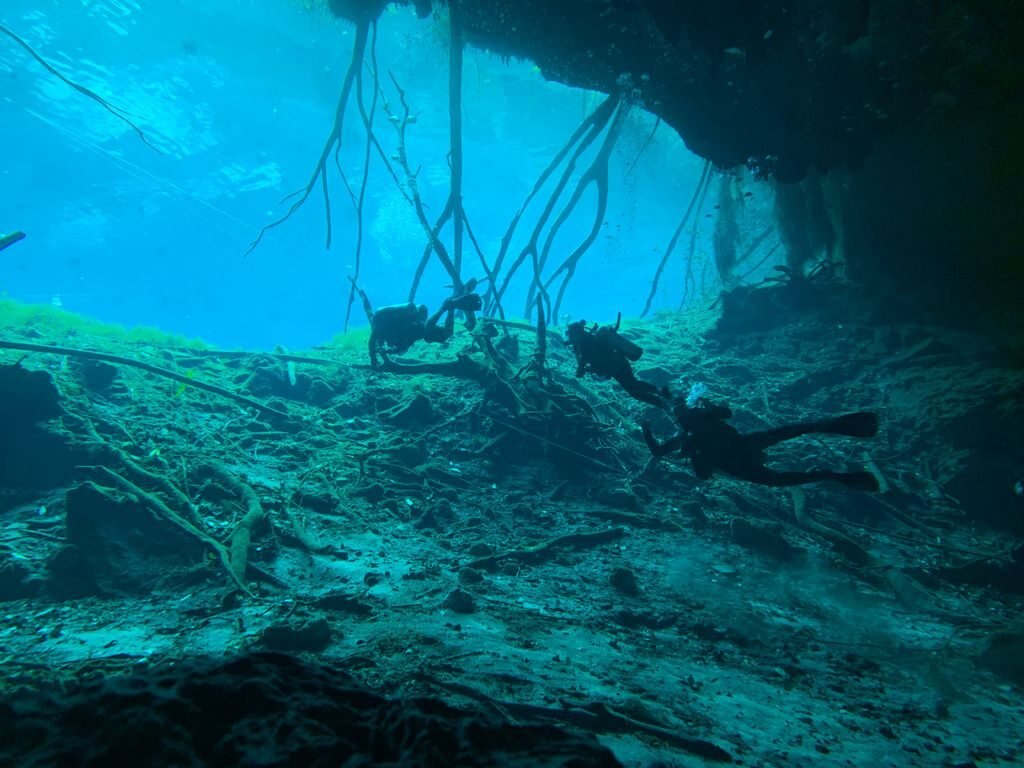Cultural immersion is a transformative experience that allows individuals to delve into the rich tapestry of diverse traditions, customs, and expressions. Through embracing cultural diversity, exploring local cuisine, and engaging with art and expression, one can embark on a journey of discovery that fosters understanding and appreciation. This article explores key takeaways from the depths of cultural immersion, offering insights for those seeking to navigate and embrace the beauty of different cultures.
Key Takeaways
- Embrace cultural diversity to gain a deeper understanding of different norms and values.
- Engage with local communities to build meaningful connections and broaden perspectives.
- Respect traditions and customs as a way to honor the heritage and identity of a culture.
- Explore local cuisine to discover the flavors and stories that define a community’s culinary heritage.
- Participate in traditional art and performances to gain insight into the symbolism and expression of a culture.
Embracing Cultural Diversity

Understanding Cultural Norms
To truly embrace cultural diversity, one must first seek to understand the cultural norms that shape a society. These unwritten rules govern social behavior and interactions, providing a framework for what is considered acceptable within a community.
Navigating these norms can be a subtle art, requiring observation, openness, and a willingness to learn. Here are a few steps to guide you:
- Observe local interactions and mimic respectful behaviors.
- Ask questions when in doubt, showing your interest and desire to learn.
- Be patient with yourself as you adapt to new social cues and expectations.
Embracing cultural norms is not about losing your identity, but about expanding your understanding of the world and its diverse ways of life.
Remember, each community has its own set of values and practices that can offer unique insights into their way of life. By engaging with these norms thoughtfully, you can deepen your cultural immersion and build meaningful connections.
Engaging with Local Communities
Building genuine relationships with local communities is a cornerstone of deep cultural immersion. By participating in daily life and local events, travelers can gain insights that are not accessible through mere observation.
Interaction with community members often leads to a more nuanced understanding of their way of life. It’s important to approach these interactions with humility and openness, as this fosters an environment of mutual learning and respect.
- Attend community gatherings
- Volunteer in local projects
- Support local businesses
Embracing the community as a learner, rather than a visitor, transforms the cultural immersion experience from a passive activity into an active journey of personal growth.
Respecting Traditions and Customs
When traveling, it’s essential to approach local traditions and customs with a sense of reverence and humility. Respecting these practices is not only a matter of courtesy but also a way to enrich your own cultural understanding. Here are a few ways to honor the cultural fabric of the places you visit:
- Take time to learn about the local customs before your trip.
- Observe and follow the etiquette that is expected in social and religious settings.
- Ask for permission before participating in or photographing traditional events.
It’s important to remember that what may seem like a simple tourist activity can hold deep significance for the local community. By showing respect, you foster an atmosphere of mutual appreciation and open-mindedness.
Embracing the local culture goes beyond mere observation; it involves actively participating in the community’s rhythm while maintaining a respectful stance.
Cultural Immersion Through Food

Exploring Local Cuisine
Diving into the heart of a culture often begins with a taste of its food. Exploring local cuisine is not just about savoring new flavors; it’s a gateway to understanding the history, geography, and soul of a place. Each dish tells a story, whether it’s a street vendor’s spicy snack or a family’s heirloom recipe.
- Sample traditional dishes at markets and street stalls
- Visit local restaurants recommended by residents
- Attend food festivals to experience a variety of local specialties
Ingredients are more than just parts of a recipe; they are symbols of the land and its traditions. By asking about the origins of these ingredients, you can learn about local agriculture, seasonal variations, and even regional trade relationships. This knowledge enriches the dining experience, transforming each meal into a lesson in cultural geography.
Embrace the opportunity to learn from local chefs and home cooks. Their insights can provide a deeper appreciation for the culinary arts and the community’s way of life.
Cooking and Sharing Meals
The act of cooking and sharing meals is a profound way to deepen one’s cultural immersion. Preparing dishes that are native to the region not only teaches you about the local palate but also about the history and significance behind each meal. It’s an intimate bridge to understanding people’s way of life.
Ingredients often tell a story of the land and its traditions. When you cook with locals, you learn the origins of each component and how they come together to create flavors unique to the culture. Sharing the finished meal is just as important, fostering a sense of community and belonging.
- Select a traditional recipe to learn
- Gather fresh, local ingredients
- Cook alongside a local chef or host
- Share the meal with new friends
The shared experience of cooking and eating is a universal language, transcending barriers and creating lasting connections. It’s a celebration of cultural unity and an essential part of the journey of discovery.
Learning the Significance of Ingredients
Every ingredient in a dish tells a story of the land, the climate, and the history of its people. Understanding the significance of ingredients is not just about taste, but also about the connection to the culture and the environment from which they come. For instance, the use of spices such as turmeric in Indian cuisine is not only for flavor but also for its health benefits and its place in traditional medicine.
- Explore the origins of local ingredients
- Learn about traditional farming and harvesting methods
- Discover the historical and cultural reasons behind ingredient choices
By delving into the significance of ingredients, we gain insight into the dietary habits and the resourcefulness of local cultures in utilizing what is available to them.
This knowledge enriches our culinary experience and deepens our appreciation for the culture. It’s a reminder that food is more than sustenance; it’s a form of expression, a way of life, and a bridge that connects us to others.
Art and Expression in Cultural Immersion

Attending Local Art Exhibitions
Immersing oneself in the local art scene is a profound way to connect with the cultural heartbeat of a community. Art exhibitions offer a visual narrative of a place’s history, values, and aspirations. By attending these showcases, one gains insights into the collective psyche and the aesthetic preferences that shape local identity.
- Observe the interaction between art and viewers
- Take note of recurring themes or styles
- Reflect on how the art influences your perception of the culture
Engaging with art is not just a passive experience; it’s an active dialogue between the observer and the creator. It’s an opportunity to delve deeper into the cultural fabric and appreciate the nuances that might otherwise go unnoticed.
Remember, every piece of art tells a story. Whether it’s a painting, sculpture, or installation, try to understand the context and the artist’s intention. This will enrich your cultural immersion journey and provide a lasting impression of the community’s artistic expression.
Participating in Traditional Performances
Immersing oneself in the cultural tapestry of a destination often involves more than just being a spectator. Participating in traditional performances allows for a deeper connection with the local culture. It’s an opportunity to step into the shoes of the locals and experience their joy, sorrow, and artistic expression firsthand.
Participation can take many forms, from dance to music, and each requires a willingness to learn and embrace new experiences. Here are a few steps to get started:
- Research local performance arts and find events or workshops.
- Approach with an open mind and respect for the art form.
- Take lessons or join rehearsals if possible.
- Engage with performers and audience members to enrich your understanding.
Embracing the rhythm and movement of a culture through performance is a powerful way to connect with its essence.
Remember, the goal is not to perfect the art but to appreciate the cultural significance behind it. By doing so, you not only gain a unique perspective but also contribute to the preservation of these cultural expressions.
Understanding Symbolism and Meaning
Art serves as a window into the soul of a culture, revealing layers of history, belief, and emotion. Decoding the symbolism in art and expression is key to deep cultural immersion. It allows us to see beyond the surface and connect with the underlying narratives that define a community.
Symbolism can be intricate and often requires guidance to fully comprehend. Engaging with local artists or cultural historians can provide invaluable insights into the motifs and themes prevalent in the region’s art.
- Identify recurring symbols and motifs
- Research historical and cultural contexts
- Discuss interpretations with local experts
The true essence of cultural immersion lies in the appreciation and understanding of the subtle nuances that make each culture unique.
By taking the time to understand symbolism and meaning, we not only enrich our travel experience but also foster a deeper respect for the diversity of human expression.
Art is not just a form of creativity but a bridge that connects diverse cultures and fosters a deeper understanding of the world around us. Through cultural immersion, we can experience the beauty and intricacies of different societies, allowing us to appreciate the unique expressions and perspectives that art provides. At CoffeeWithView.com, we believe in the power of travel and lifestyle to enrich your life with unforgettable memories and insights. Dive into our treasure trove of travel guides, relationship advice, and lifestyle tips that will transform your journey into an adventure of love, life, and exploration. Don’t just observe—immerse yourself in the art of living. Visit our website now to start your voyage into a world of discovery and intimate cultural experiences.
Conclusion
In conclusion, cultural immersion is a transformative journey that allows individuals to gain a deeper understanding of diverse traditions, values, and perspectives. By actively engaging with different cultures, one can develop empathy, tolerance, and a broader worldview. This journey of discovery fosters personal growth, enriches relationships, and promotes global harmony. Embracing cultural immersion is not only an enriching experience but also a powerful tool for building bridges across communities and fostering a more inclusive society.
Frequently Asked Questions
How can I understand cultural norms better?
Understanding cultural norms involves observing and learning from local interactions, asking questions, and being open-minded to different perspectives.
What are some ways to engage with local communities during cultural immersion?
Engaging with local communities can be done through volunteering, attending community events, participating in cultural workshops, and simply striking up conversations with locals.
How can I show respect for traditions and customs while immersing in a new culture?
Showing respect for traditions and customs involves being mindful of cultural practices, asking for permission when necessary, and refraining from actions that may be considered disrespectful.
What are the best ways to explore local cuisine during cultural immersion?
Exploring local cuisine can be done by visiting traditional markets, trying authentic local restaurants, and participating in cooking classes or food tours.
How can I learn the significance of ingredients in local cuisine?
Learning the significance of ingredients involves talking to local chefs, visiting farms or food producers, and understanding the historical and cultural context of specific ingredients.
Why is attending local art exhibitions important for cultural immersion?
Attending local art exhibitions provides insight into the artistic expression and creativity of the local community, allowing for a deeper understanding of cultural values and perspectives.



